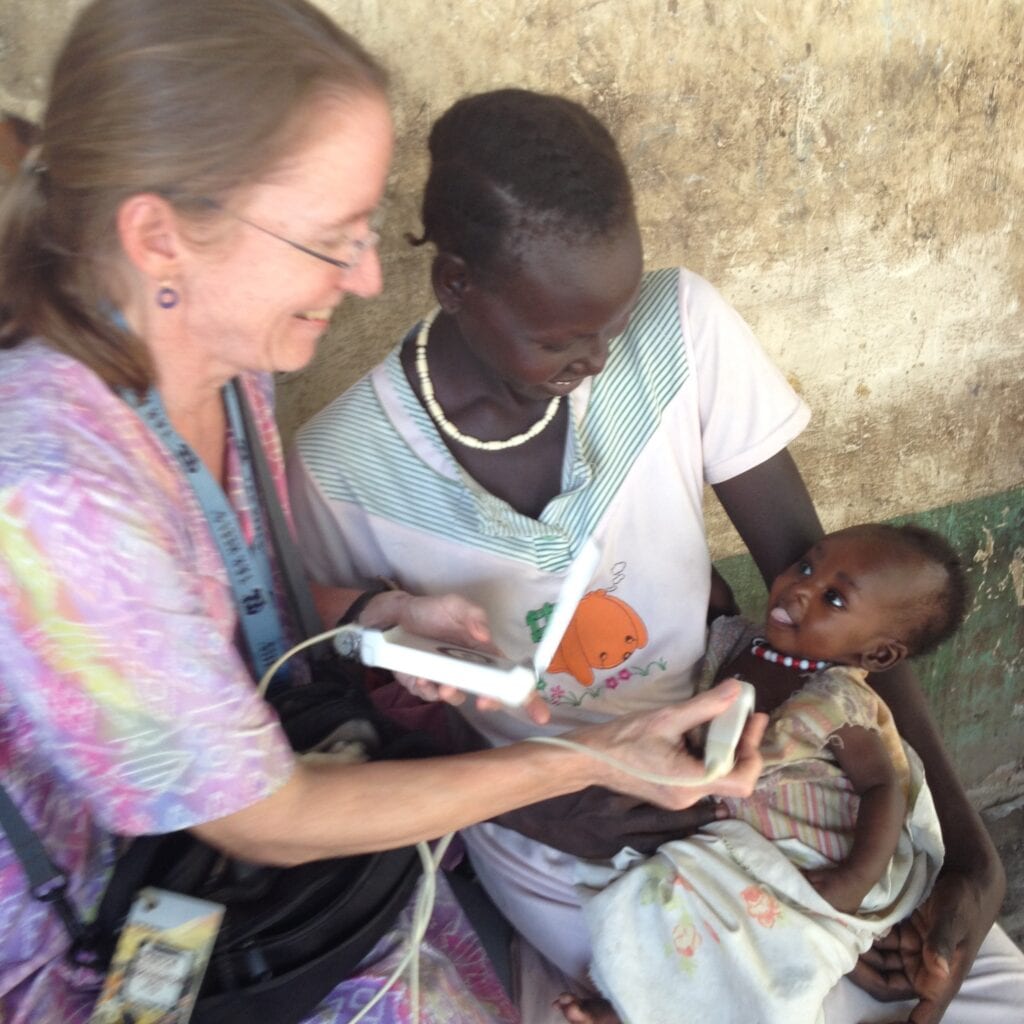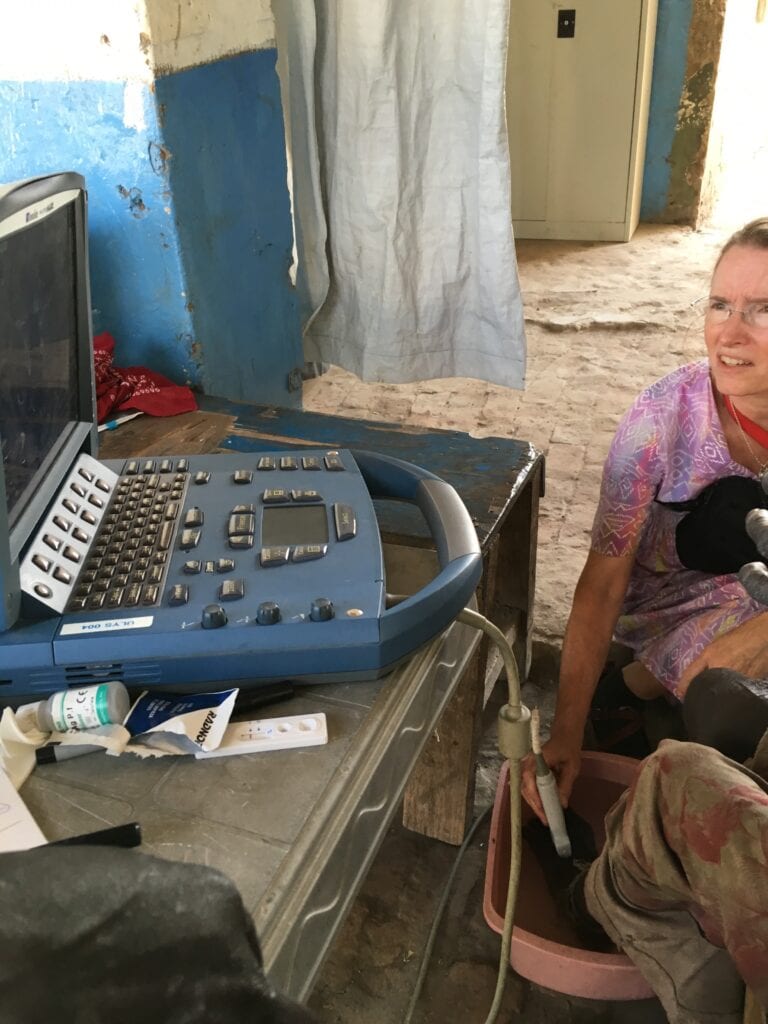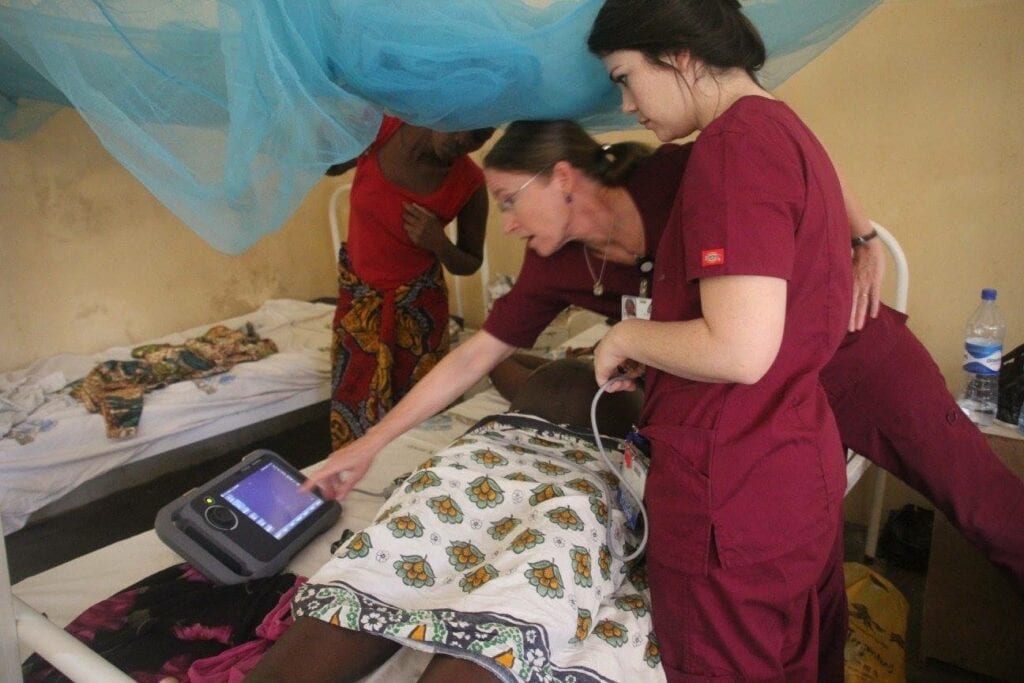I work for CHAS health, a non-profit Federally Qualified Healthcare Center that serves mostly people in the community with lower resources. Before that I worked in Seattle for a healthcare cooperative, then in Moscow, Idaho as an internist in private practice, taking care of my patients in the clinic and hospital, and after that as a hospitalist in many hospitals in the northwest.
Why POCUS?
I took my first bedside ultrasound course from some very committed POCUS enthusiasts at Harvard Medical School, from their department of emergency medicine. Over a few days, the blurry gray blobs that are the stuff of ultrasound resolved themselves into recognizable organs. Once in a while, I was able to place a transducer so that I could make those pictures happen myself with the perfectly-fit medical students and premeds who were our models. “This changes EVERYTHING,” I thought.
After decades of practicing medicine, I was able to see inside my patients, visualize the organs whose function or dysfunction made up the diseases I was treating. A physical exam when enriched by an ultrasound image became a powerful diagnostic tool.

I was in an unusual situation at the time. In 2011 my favorite nurse practitioner partner died and another doctor in our office decided to relocate far away. My final child who was no longer a child was leaving home for university. I had decided that although our practice had no mechanism for sabbaticals, I would go ahead and take one anyway. My sabbatical involved working as a hospitalist in 5 of my nearest states, working very hard for stints of 7 days, followed by actual time off. That situation meant that I could really concentrate on learning a new thing. I decided that ultrasound would be that thing.
During that first course, I decided that I wanted to learn how to do bedside ultrasound well enough that I could teach other people how to do it. I had everything I needed: time, classes to take, more money than I had ever made doing private practice. So, I could buy myself a pocket ultrasound machine. Also, as a locum tenens hospitalist, the posts I filled were always like war zones, with super sick patients who had an abundance of pathology to visualize with my new tool.

I did lots of ultrasounds. I took classes, online and in person. I studied anatomy again. I even did a mini-fellowship and learned how to teach ultrasound to medical students. When I had the teaching skills, I started to do overseas projects in Africa, primarily involving teaching students or local staff how to use ultrasound. I pushed other people who were not in academics to learn POCUS and do it all the time.
Seeing patients was more interesting to me than ever because I could see what their pathology looked like and I was surprised so much of the time. Patients loved it. I loved that the patients loved it. I didn’t need to wait for imaging to move forward with appropriate treatment. I got to meet all sorts of people: doctors and nurses who do global health, academic physicians who teach medical students, and residents. I got to teach medical students and residents, and soak up all that positivity that they have before their souls are crushed by our profit-driven system. But I digress.
It’s been nearly 10 years since I started learning ultrasound and I’m still excited about it. A nerd even. It makes me happy. that may be the real bottom line of “why POCUS?”

About the Author
Dr. Janice Boughton, MD, FACP, RDMS
Physician, Internal Medicine, CHAS Health
Dr. Janice Boughton grew up in California, in a beach town near San Diego. She enjoys being in the wilderness, but also reading and hanging out with her dog. Dr. Boughton sings and plays guitar, enjoys cross-country skiing and canoeing in the summer. She is married and has two grown children. She earned her Psychology BA from Stanford University and her MD from Johns Hopkins School of Medicine and she specializes in internal medicine.

